Reduction of Adipose Tissue Mass by the Angiogenesis Inhibitor ALS-L1023 from Melissa officinalis
- PMID: 26599360
- PMCID: PMC4658083
- DOI: 10.1371/journal.pone.0141612
Reduction of Adipose Tissue Mass by the Angiogenesis Inhibitor ALS-L1023 from Melissa officinalis
Abstract
It has been suggested that angiogenesis modulates adipogenesis and obesity. This study was undertaken to determine whether ALS-L1023 (ALS) prepared by a two-step organic solvent fractionation from Melissa leaves, which exhibits antiangiogenic activity, can regulate adipose tissue growth. The effects of ALS on angiogenesis and extracellular matrix remodeling were measured using in vitro assays. The effects of ALS on adipose tissue growth were investigated in high fat diet-induced obese mice. ALS inhibited VEGF- and bFGF-induced endothelial cell proliferation and suppressed matrix metalloproteinase (MMP) activity in vitro. Compared to obese control mice, administration of ALS to obese mice reduced body weight gain, adipose tissue mass and adipocyte size without affecting appetite. ALS treatment decreased blood vessel density and MMP activity in adipose tissues. ALS reduced the mRNA levels of angiogenic factors (VEGF-A and FGF-2) and MMPs (MMP-2 and MMP-9), whereas ALS increased the mRNA levels of angiogenic inhibitors (TSP-1, TIMP-1, and TIMP-2) in adipose tissues. The protein levels of VEGF, MMP-2 and MMP-9 were also decreased by ALS in adipose tissue. Metabolic changes in plasma lipids, liver triglycerides, and hepatic expression of fatty acid oxidation genes occurred during ALS-induced weight loss. These results suggest that ALS, which has antiangiogenic and MMP inhibitory activities, reduces adipose tissue mass in nutritionally obese mice, demonstrating that adipose tissue growth can be regulated by angiogenesis inhibitors.
Conflict of interest statement
Figures
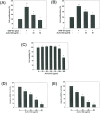
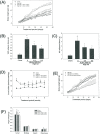
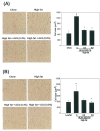
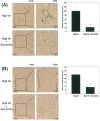

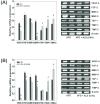
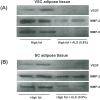

Similar articles
-
Regulation of Obesity by Antiangiogenic Herbal Medicines.Molecules. 2020 Oct 4;25(19):4549. doi: 10.3390/molecules25194549. Molecules. 2020. PMID: 33020443 Free PMC article. Review.
-
The anti-angiogenic herbal extract from Melissa officinalis inhibits adipogenesis in 3T3-L1 adipocytes and suppresses adipocyte hypertrophy in high fat diet-induced obese C57BL/6J mice.J Ethnopharmacol. 2016 Feb 3;178:238-50. doi: 10.1016/j.jep.2015.12.015. Epub 2015 Dec 15. J Ethnopharmacol. 2016. PMID: 26702505
-
The anti-angiogenic herbal composition Ob-X inhibits adipose tissue growth in obese mice.Int J Obes (Lond). 2010 May;34(5):820-30. doi: 10.1038/ijo.2010.13. Epub 2010 Feb 23. Int J Obes (Lond). 2010. PMID: 20179671
-
Korean red ginseng (Panax ginseng) prevents obesity by inhibiting angiogenesis in high fat diet-induced obese C57BL/6J mice.Food Chem Toxicol. 2013 Mar;53:402-8. doi: 10.1016/j.fct.2012.11.052. Epub 2012 Dec 8. Food Chem Toxicol. 2013. PMID: 23232078
-
Adipose tissue angiogenesis.J Anim Sci. 2004 Mar;82(3):925-34. doi: 10.2527/2004.823925x. J Anim Sci. 2004. PMID: 15032451 Review.
Cited by
-
Quercetin inhibits body weight gain and adipogenesis via matrix metalloproteinases in mice fed a high-fat diet.Nutr Res Pract. 2023 Jun;17(3):438-450. doi: 10.4162/nrp.2023.17.3.438. Epub 2022 Nov 23. Nutr Res Pract. 2023. PMID: 37266112 Free PMC article.
-
Anti-Angiogenic Effects of Natural Compounds in Diet-Associated Hepatic Inflammation.Nutrients. 2023 Jun 14;15(12):2748. doi: 10.3390/nu15122748. Nutrients. 2023. PMID: 37375652 Free PMC article. Review.
-
The ominous triad of adipose tissue dysfunction: inflammation, fibrosis, and impaired angiogenesis.J Clin Invest. 2017 Jan 3;127(1):74-82. doi: 10.1172/JCI88883. Epub 2017 Jan 3. J Clin Invest. 2017. PMID: 28045400 Free PMC article. Review.
-
Regulation of Obesity by Antiangiogenic Herbal Medicines.Molecules. 2020 Oct 4;25(19):4549. doi: 10.3390/molecules25194549. Molecules. 2020. PMID: 33020443 Free PMC article. Review.
-
New Scaffold for Angiogenesis Inhibitors Discovered by Targeted Chemical Transformations of Wondonin Natural Products.ACS Med Chem Lett. 2017 Sep 12;8(10):1066-1071. doi: 10.1021/acsmedchemlett.7b00281. eCollection 2017 Oct 12. ACS Med Chem Lett. 2017. PMID: 29057052 Free PMC article.
References
-
- Crandall DL, Hausman GJ, Kral JG (1997) A review of the microcirculation of adipose tissue: anatomic, metabolic, and angiogenic perspectives. Microcirculation 4: 211–232. - PubMed
-
- Bouloumié A, Lolmède K, Sengenès C, Galitzky J, Lafontan M (2002) Angiogenesis in adipose tissue. Annales d'endocrinologie 63: 91–95. - PubMed
-
- Silverman KJ, Lund DP, Zetter BR, Lainey LL, Shahood JA, Freiman DG, et al. (1998) Angiogenic activity of adipose tissue. Biochemical and Biophysical Research Communications 153: 347–352. - PubMed
-
- Lijnen HR, Maquoi E, Hansen LB, Van Hoef B, Frederix L, Collen D (2002) Matrix metalloproteinase inhibition impairs adipose tissue development in mice. Arteriosclerosis, Thrombosis, and Vascular Biology 22: 374–379. - PubMed
-
- Galardy RE, Grobelny D, Foellmer HG, Fernandez LA (1994) Inhibition of angiogenesis by the matrix metalloprotease inhibitor N-[2R-2-(hydroxamidocarbonymethyl)-4-methylpentanoyl)]-L-tryptophan methylamide. Cancer Research 54: 4715–4718. - PubMed
Publication types
MeSH terms
Substances
Grants and funding
LinkOut - more resources
Full Text Sources
Other Literature Sources
Research Materials
Miscellaneous

